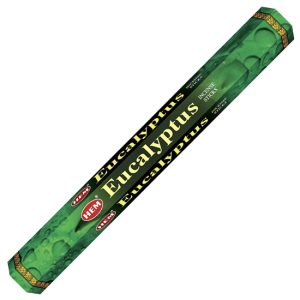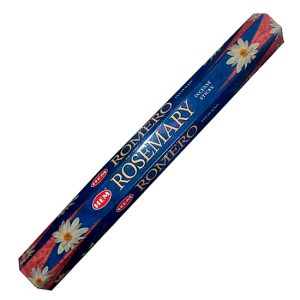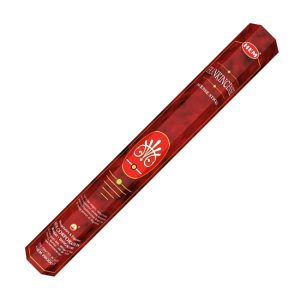Can Incense Relieve Allergy Symptoms?
For many of us, incense offers a comforting aroma that fills a space with warmth and tranquility. But if you’re someone who struggles with allergies, you may think incense is off-limits. Surprisingly, some types of incense can provide benefits, offering natural decongestant and anti-inflammatory effects that might help alleviate allergy symptoms.
Here’s how carefully selected incense varieties may support those of us dealing with respiratory discomfort.
- Lavender incense: Contains natural antihistamine properties that reduce inflammation, which may help relieve allergy symptoms.
- Eucalyptus incense: Acts as a natural decongestant, reducing nasal congestion and helping us breathe easier.
- Frankincense incense: Provides a gentler, anti-inflammatory option that may ease respiratory issues without heavily irritating the airways.
- Sandalwood incense: Known for its mild scent and minimal smoke, making it less likely to trigger sensitivities.
- Natural hypoallergenic options: Opting for incense like frankincense or sage in well-ventilated spaces can reduce allergen levels indoors.
Table of Contents
How Incense Can Help with Allergies
Can incense actually relieve allergy symptoms? While traditional incense may irritate some, hypoallergenic varieties derived from natural resins and organic compounds are different. These types of incense don’t contain synthetic chemicals, which minimizes smoke and other particulates that may cause irritation.
For example, frankincense and lavender are natural resins with anti-inflammatory properties. Compounds like boswellic acids in frankincense have been shown to inhibit enzymes that cause inflammation, making breathing easier. Using hypoallergenic incense that produces minimal smoke—or heating resins without burning—can further reduce respiratory risks, offering a safe, gentle experience that doesn’t overwhelm the senses.
Best Incense for Allergy Relief
We’ll now explore five types of incense that could help manage allergy symptoms, focusing on their specific properties and safety tips for optimal relief.
1. Frankincense
Frankincense incense, derived from Boswellia tree resin, is widely recognized for its anti-inflammatory benefits. Boswellic acids in frankincense are known to inhibit pro-inflammatory enzymes like 5-lipoxygenase, which can help reduce respiratory inflammation.
The BMJ review on Boswellia serrata extract also supports its efficacy in managing inflammation-based conditions, making frankincense a natural choice for allergy relief.

Research Insight: Clinical and Molecular Allergy has reported that incense smoke, including that from frankincense, contains particulate matter and volatile organic compounds (VOCs) that can negatively impact respiratory health.
These pollutants are particularly concerning for individuals with asthma or chronic respiratory issues (clinicalmolecularallergy.biomedcentral.com). For a safer experience, consider using frankincense in a diffuser or resin heater to enjoy its benefits without inhaling smoke.
2. Lavender
Lavender incense is popular for its calming effects and hypoallergenic qualities. Key compounds, such as linalool, function as natural antihistamines and anti-inflammatories, helping to ease respiratory symptoms.
Studies also highlight lavender essential oil’s anti-inflammatory properties, enhancing its value as a soothing option for allergy sufferers.
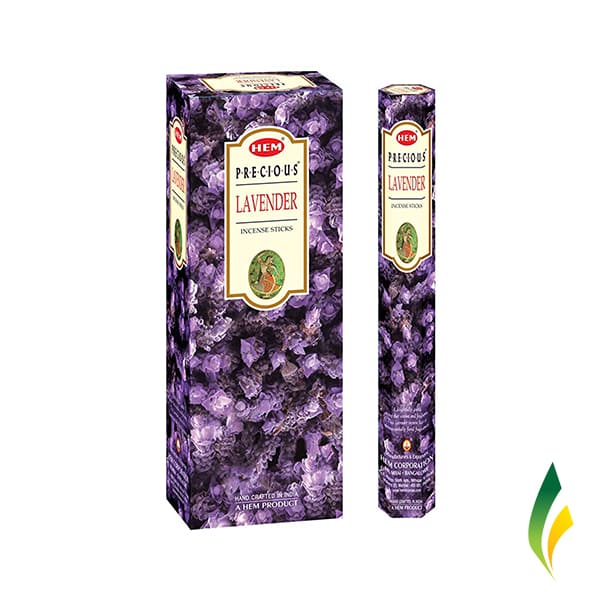
Research Insight: A study in Environmental Science and Pollution Research cautions that incense smoke, even from natural sources like lavender, releases particulate matter and nitrogen dioxide. These pollutants can impair lung function and contribute to respiratory disease over time (link.springer.com).
Using lavender essential oil in a diffuser offers a smoke-free way to enjoy lavender’s calming benefits while minimizing respiratory risks.
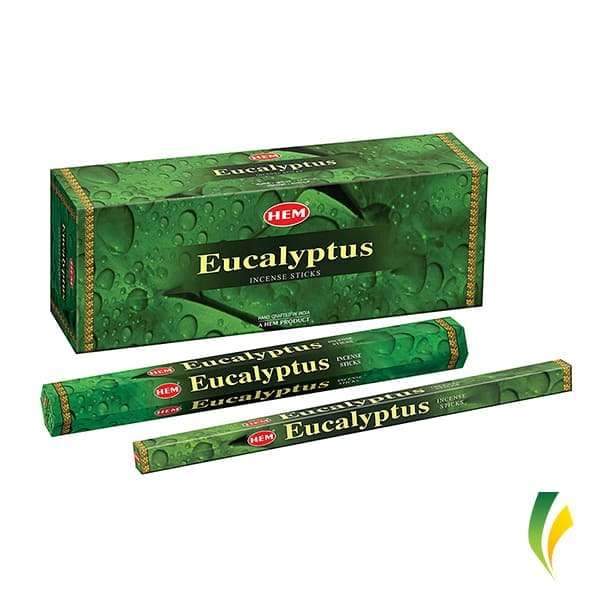
3. Eucalyptus
Eucalyptus incense is an excellent natural option for easing congestion. Known for its fresh, mentholated aroma, eucalyptus contains compounds that open nasal passages and improve airflow, making it beneficial for those dealing with allergy symptoms.
For those of us who prefer natural alternatives to medication, eucalyptus incense provides a holistic approach that reduces inflammation without artificial additives.
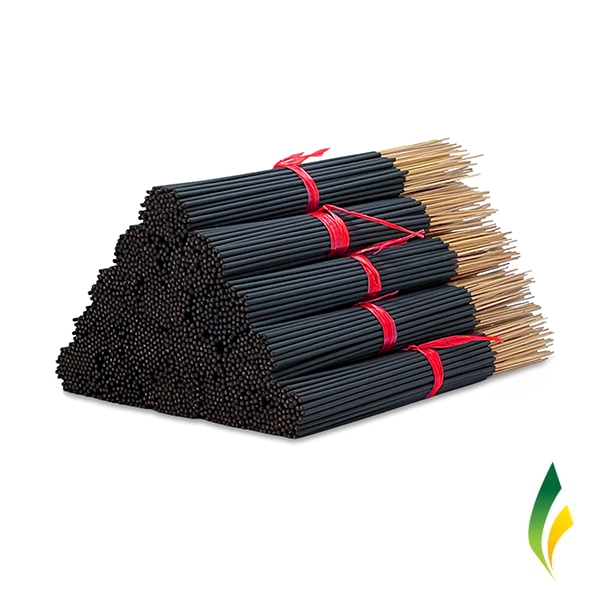
4. Peppermint
Peppermint incense, rich in menthol, can relieve breathing difficulties associated with allergies. The menthol in peppermint acts as a mild anti-inflammatory, easing respiratory discomfort for those experiencing asthma or allergies.
Additionally, its invigorating scent helps relieve stress, which can exacerbate allergy symptoms.

5. Sandalwood
Sandalwood incense is a top choice for those with respiratory sensitivities. With a soft, calming scent, sandalwood produces minimal smoke, making it a suitable option for those of us who are prone to irritation.
It has natural anti-inflammatory properties that may reduce allergy symptoms, and its soothing effect can help create a peaceful environment for meditation or relaxation.
Additional Incense Options with Allergy Benefits
- Rosemary incense: Known for anti-inflammatory and antispasmodic properties, rosemary can help with lung function and reduce symptoms of allergic rhinitis.
- Lemon incense: This hypoallergenic incense provides a fresh aroma and anti-inflammatory benefits, opening the airways without harsh chemicals.
- Chamomile incense: Known for histamine-blocking effects, chamomile incense can reduce respiratory irritation and create a calming atmosphere.
- Basil incense: A gentle option with minimal smoke, basil’s anti-inflammatory compounds, such as eugenol, may ease breathing.
Shop Now: Incense Sticks to Relieve Your Allergies
-
HEM Incense Sticks, Incense Sticks
$1.90Original price was: $1.90.$1.50Current price is: $1.50. -
HEM Incense Sticks, Incense Sticks
$1.90Original price was: $1.90.$1.50Current price is: $1.50. -
HEM Incense Sticks, Incense Sticks
$1.90Original price was: $1.90.$1.50Current price is: $1.50. -
HEM Incense Sticks, Incense Sticks
$1.90Original price was: $1.90.$1.50Current price is: $1.50. -
HEM Incense Sticks, Incense Sticks
$1.90Original price was: $1.90.$1.50Current price is: $1.50. -
HEM Incense Sticks, Incense Sticks
$1.90Original price was: $1.90.$1.50Current price is: $1.50.
How to Choose the Right Incense for Allergies
Choosing the right incense can create a more enjoyable, allergy-friendly experience. Selecting hypoallergenic, natural options free from synthetic chemicals will be gentler on the respiratory system. For those with heightened sensitivities, consider using essential oils or heating resins, which can provide a similar effect without releasing smoke.
Selection Criteria for Hypoallergenic Incense:
- Charcoal-free: Look for incense that doesn’t use charcoal, which reduces smoke and irritants.
- Fragrance-free: For those with strong sensitivities, unscented options can avoid triggering any allergic reactions.
- Natural ingredients: Options like lavender, sage, or frankincense provide plant-based benefits over synthetic scents.
Maintaining proper ventilation is crucial. Keep windows open when burning incense or use an air purifier to prevent smoke buildup indoors. Limiting exposure to short periods can also help reduce any negative effects on the respiratory system. Consulting a healthcare provider or allergist can provide more personalized advice on the best incense choices for allergy management.

How to Use Incense for Allergy Relief Safely
Using incense safely requires more than just lighting a stick. Here’s a guide to help you maximize the benefits while reducing risks:
- Choose hypoallergenic incense like frankincense or lavender for a gentler option.
- Ensure the room is well-ventilated to prevent smoke accumulation.
- Light and let the incense smolder, then extinguish the flame to reduce smoke.
- Limit exposure time to around 10-15 minutes at first, allowing your body to adjust.
- Place the incense in a safe holder to catch any ash and prevent potential fire hazards.
Safety Tips:
- Never leave incense unattended.
- Keep it out of reach of children and pets.
- Always extinguish completely after use.
Best Times to Use Incense:
- Early mornings or evenings for calm and focus.
- Open, ventilated spaces to prevent heavy smoke buildup.
Suggested Tools:
- Incense holder or burner
- Ash catcher for cleaner use
- Small air purifier to maintain air quality
Alternative Aromatherapy Options for Severe Allergies
For those of us with severe allergies, alternatives to traditional incense may be safer:
- Resin heating: Use heated resins to release scents without producing smoke.
- Essential oil diffusers: Diffuse essential oils like lavender or eucalyptus as a smoke-free alternative.
- Sound cleansing: Using singing bowls or bells can offer a relaxing effect without introducing allergens into the air.
Frequently Asked Questions
Does Frankincense Help With Allergies?
Yes, frankincense can help with allergies due to its anti-inflammatory properties, which may reduce histamine release and soothe respiratory symptoms.
Studies suggest that boswellic acids in frankincense can inhibit inflammation-related enzymes, but it’s worth noting that incense smoke itself can introduce pollutants.
Consider diffusing frankincense essential oil to avoid respiratory irritation.
Can Incense Trigger Allergies?
Yes, incense can cause allergic reactions as smoke releases particulate matter and chemicals that may irritate the respiratory tract.
For a safer option, hypoallergenic incense or smoke-free methods like essential oils or resin heating can be less irritating, particularly in shared spaces where sensitivities may vary.
Is Incense Safe for Pets with Allergies?
Incense may not be safe for pets with respiratory sensitivities. Pets, especially cats and dogs, can be more susceptible to smoke and airborne particulates, which may trigger allergic reactions or respiratory issues.
For homes with pets, consider using essential oil diffusers instead of incense. Always check that the essential oil is pet-safe, as some oils (like tea tree) can be toxic to animals.
How Does Incense Compare to Essential Oils for Allergy Relief?
Essential oils can be a gentler option for allergy relief, as they don’t produce smoke or airborne particulates like incense. Diffusing oils such as lavender, eucalyptus, or frankincense can provide similar aromatic benefits with reduced respiratory risks.
Essential oil diffusers release a fine mist without the pollutants associated with burning, making them a safer alternative for those with respiratory sensitivities or allergies.
Conclusion
Exploring incense for allergy relief can bring benefits if done thoughtfully. Choosing hypoallergenic, natural types, using smoke-free alternatives, and ensuring proper ventilation can help create a comforting atmosphere without overwhelming the respiratory system. Since each person’s tolerance is different, consulting with healthcare professionals and using essential oils or resin heating methods may be better for long-term respiratory health.
Have you tried using incense to manage your allergies? Share your experience or tips below to help others find their ideal incense choices for a more comfortable living environment.



